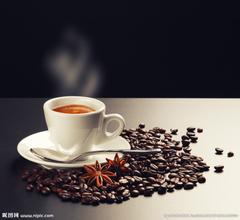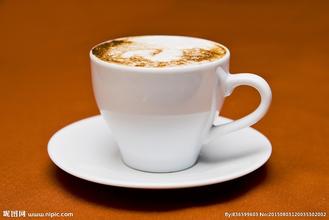How lattes were invented and made from which country
How lattes were invented and made from which country
The first step is to grind coffee beans into coffee powder, the aroma of coffee beans will evaporate more than 90% in two minutes, so be sure to use freshly ground coffee powder. Many coffee shops even grind a lot of coffee powder the night before for business the next day, but the best baristas require that it take no more than a minute to grind to make coffee.
Pressing powder: the water will find the fastest shortcut through any place, so you must press the powder evenly, otherwise the coffee powder in the handle is high in some places and low in some places. After the water rushes in, the density is uneven. Will greatly affect the taste of coffee.
Milk foam: when making lattes, the quality of milk is very important, otherwise it will not only affect the taste, but also affect the production of milk flowers. While milking, the coffee has been washed into the cup, and the process is 25 seconds.
Milk flower: when pouring milk foam into a coffee cup containing espresso, use the direction, angle and speed of the milk pot to slightly control the milk to float from the bottom of the cup to produce a beautiful pattern, instead of using a mold. This has high requirements on the temperature and density of coffee, the temperature and thickness of milk, so it is called art.
The word Latte comes from Italy, which means milk, and in France, it is called lait, which also means milk. Latte was invented by Fanz George Kolschitsky, a Viennese in Italy. As the name implies, Coffee Latte is milk and coffee. But later people were lazy to call this drink a latte Latte for short.
The composition of the latte is 1. One portion of semantic concentrate (one shot: 30ml of espresso) 2. Hot milk whipped (usually there is one centimeter of foam foam on the top of the coffee). There is a unique way of drinking lattes in Melbourne. Some people sprinkle a thin layer of brown sugar powder on the top foam of the latte, then scoop it up with a small spoon and taste it! In addition, in Australia, it is usually filled with a transparent latte cup (about 200ml-300ml), so gluttons can clearly tell whether this is a good latte or not. In the coffee city of Melbourne, drinking Gaga has always been a very exquisite national sport.

Important Notice :
前街咖啡 FrontStreet Coffee has moved to new addredd:
FrontStreet Coffee Address: 315,Donghua East Road,GuangZhou
Tel:020 38364473
- Prev

When did the Arabica coffee bean family start?
When did the Arabica coffee bean family begin in bourbon: juxtaposed with Tibica as an ancient and excellent variety. It can also distinguish between round bourbon and pointed bourbon. The round body bourbon is full of vitality, unlike the weak and sickly Tibica, the round side wave is better than Tibica in resistance to leaf disease, and its flavor is as good as Tibica. The disadvantage is that coffee trees have to rest for a year. (sure enough, nourishing essence
- Next

What are the common problems of beginners with coffee and milk?
It is easier to master the cold temperature before the milk starts. You can take it out from the normal 4-7oC refrigerator and use it. The rule of WBC (World Barista Competition) is 60-65oC. The common temperature in Europe is around 60oC. The common 55oC in Australia (which I think is better to drink) is to do business and sell it to Hong Kong customers (that is, American style). They require 65-75oC (so smoke to.
Related
- Beginners will see the "Coffee pull flower" guide!
- What is the difference between ice blog purified milk and ordinary milk coffee?
- Why is the Philippines the largest producer of crops in Liberia?
- For coffee extraction, should the fine powder be retained?
- How does extracted espresso fill pressed powder? How much strength does it take to press the powder?
- How to make jasmine cold extract coffee? Is the jasmine + latte good?
- Will this little toy really make the coffee taste better? How does Lily Drip affect coffee extraction?
- Will the action of slapping the filter cup also affect coffee extraction?
- What's the difference between powder-to-water ratio and powder-to-liquid ratio?
- What is the Ethiopian local species? What does it have to do with Heirloom native species?

